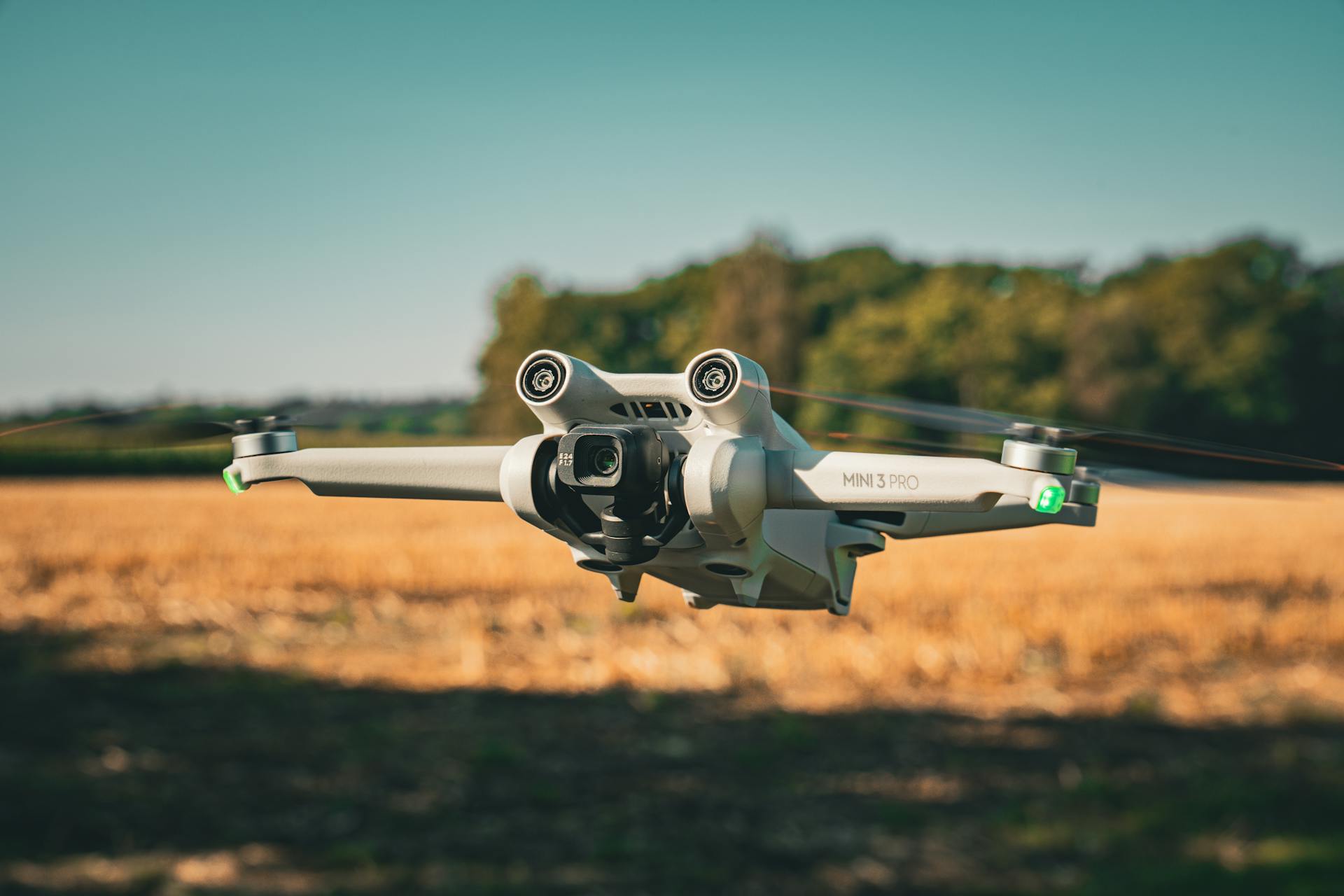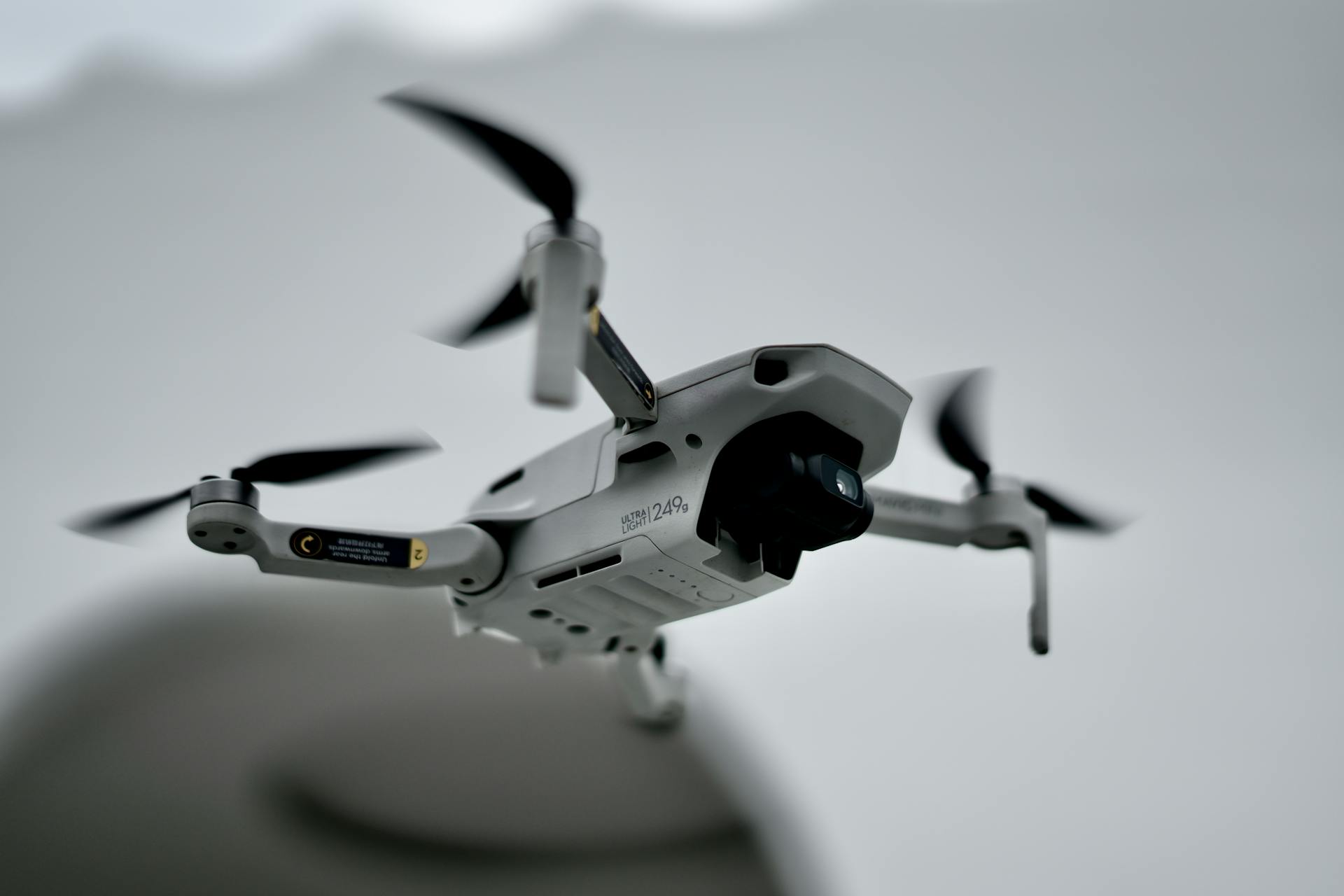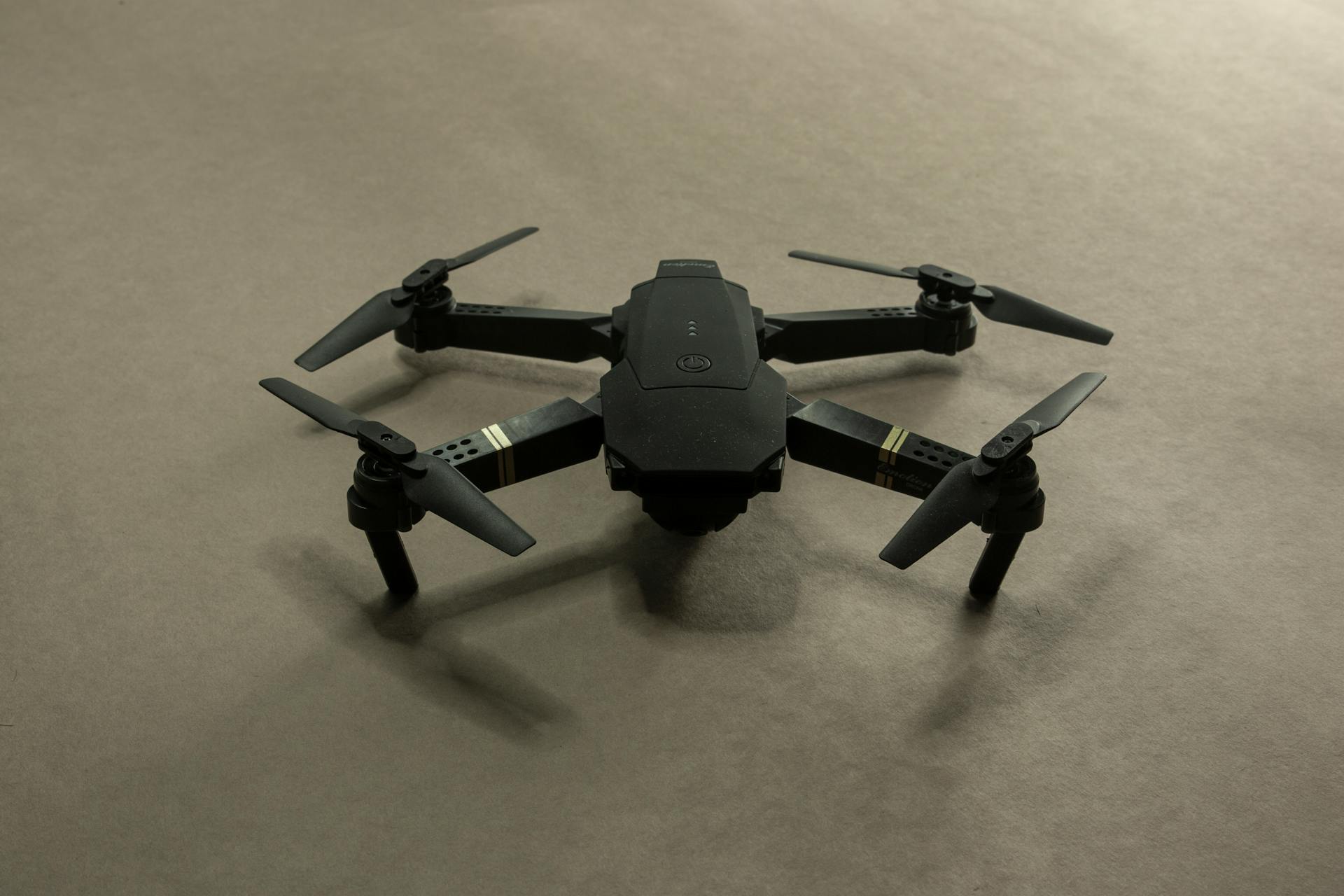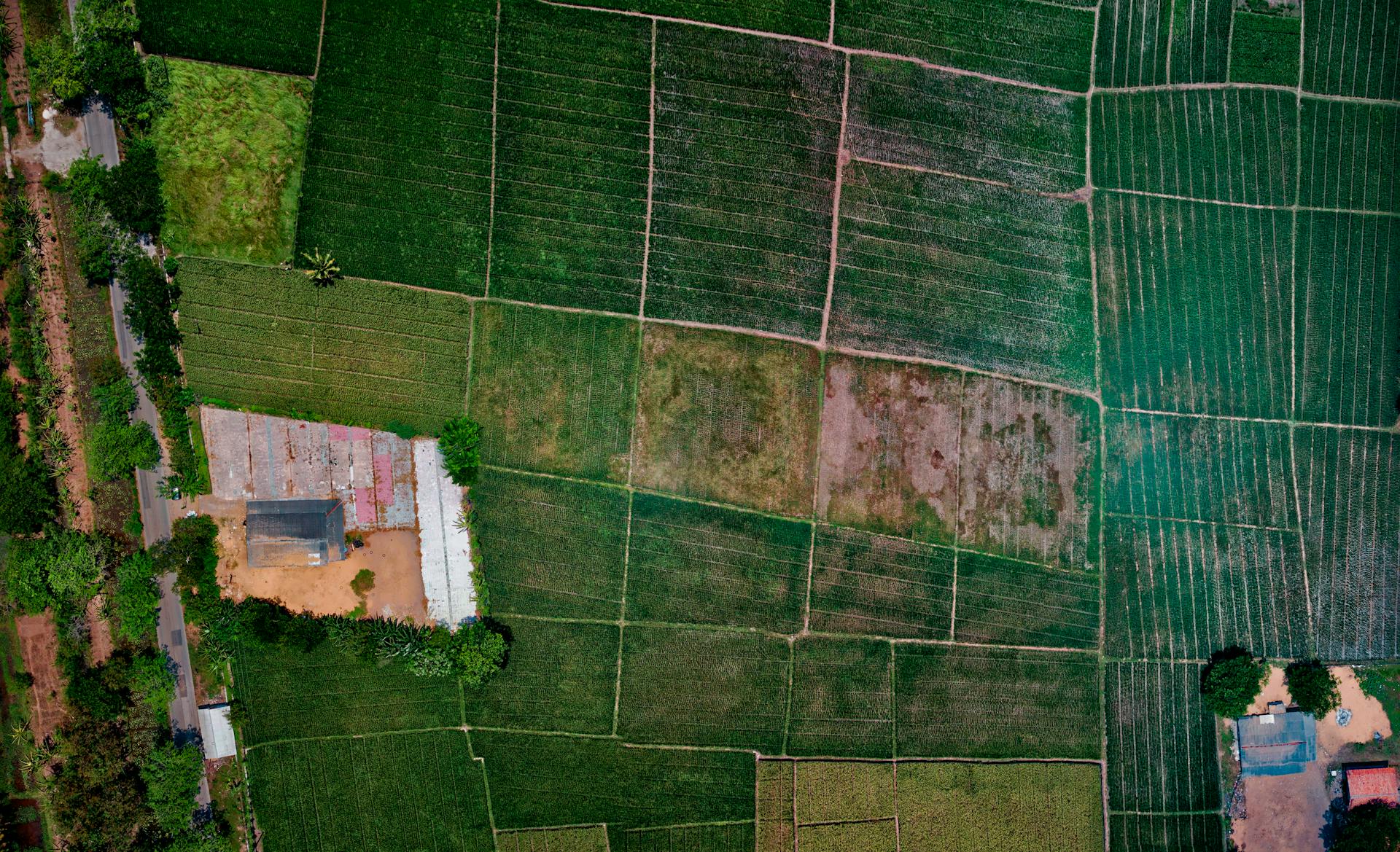
The Indian military has made significant strides in developing its drone capabilities, with a focus on enhancing its combat effectiveness. The country's indigenous drone development program has yielded impressive results, with the DRDO's (Defence Research and Development Organisation) Rustom-2 drone capable of carrying out reconnaissance and surveillance missions.
The Rustom-2 drone boasts a range of over 150 kilometers and can stay airborne for up to 24 hours, making it an invaluable asset for the Indian military. Its advanced sensors and communication systems enable it to transmit high-quality video feed and real-time data to ground control stations.
The Indian military's drone capabilities are not limited to reconnaissance and surveillance; they are also being used for combat operations. The Indian Air Force has successfully employed drones in precision strikes against enemy positions, demonstrating the potential of drones in modern warfare.
Worth a look: Indian Drone Aircraft
Indian Military Drone Capabilities
The Indian military is upgrading its drone capabilities with the induction of the Drishti-10, also known as the Starliner.
This advanced drone can fly as high as 30,000 feet and stay airborne for 36 hours, covering over 2,000 km.
The Starliner is a highly advanced aerial system that can carry a payload of up to 350 kg, equipped with electro-optical sensors, synthetic-aperture radar, and ground-moving target indication systems.
It can also map large areas and be used for airborne communication relay, making it a valuable asset for the Indian military.
The drone's sensors can be used for hyperspectral imagery, which can see through field camouflage, giving the Indian military a significant tactical advantage.
The Starliner is an all-weather UAV that complies with NATO's STANAG 4671 requirement, allowing it to seamlessly fly across the airspace of treaty signatories.
This means the Indian military can use the Starliner to keep an eye on Pakistan from multiple locations, including Bathinda in Punjab.
The drone's mission management is performed in an autonomous manner through the Hermes ground control system, which can perform two concurrent missions from the same ground control system.
The Indian Navy has already deployed its sole Starliner UAV in Porbandar in Gujarat, where it keeps an eye on India's Western approaches and on deployments of the Pakistani Navy.
A unique perspective: How Long Can a Military Drone Fly
Future of Indian Military Drones
India is making significant strides in developing its military drone capabilities, with the recent trial of the Ghatak, a stealthy and autonomous drone that can pilot itself and land on any runway without assistance.
The Ghatak is being developed by the Defense Research and Development Organization within India's Defense Ministry and is expected to play a future role in the ongoing standoffs along the India-China border.
This drone has a weapons bay for missiles and smart bombs, making it a valuable asset for the Indian Air Force.
The autonomous system based on a flying wing design marks a major advancement in self-piloting technology, with only a handful of countries mastering this technology so far.
India's move toward self-reliance in rapidly evolving drone technology is a significant step forward, allowing the country to reduce its dependence on external sources.
The Indian Air Force will be able to dispatch the Ghatak to any surveyed airfield and land it without infrastructure like ground radar, or a pilot.
A different take: Military Drone Pilot Salary
The drone's ability to autonomously land without assistance is a significant milestone, and it will greatly enhance the operational capabilities of the armed forces.
The Ghatak is not the only advanced drone India is developing, with the Indian Army set to induct the Drishti-10, an advanced version of the Israel-based Elbit system's Hermes-900 Medium Altitude Long Endurance (MALE) Unmanned Aerial Vehicle.
The Drishti-10 can carry an array of advanced sensory equipment payload that can weigh up to 350 kg and can fly as high as 30,000 feet.
The drone can stay airborne for 36 hours at a time, covering over 2,000 km, and can be used for airborne communication relay, hyperspectral imagery, and electronic warfare.
The induction of the Drishti-10 will make the army the second service after the navy to operate the platform, with the navy having deployed its sole Starliner UAV in Porbandar in Gujarat.
Discover more: Navy Drone Aircraft
Combat Drone Developments
India is rapidly advancing its drone technology, with the recent testing of the Ghatak, a combat drone that can pilot itself and land on any runway without assistance. The Ghatak is being developed by India's Defense Research and Development Organization and is expected to play a future role in the ongoing standoffs along the Line of Actual Control with China.
The Ghatak has a stealthy design and a weapons bay for missiles and smart bombs, making it a significant advancement in self-piloting technology. It's a major milestone for India's defense capabilities, marking a significant step towards self-reliance in rapidly evolving drone technology.
India's Defense Ministry has stated that the Ghatak's flight in the tailless configuration marks a major advancement in flying wing technology, joining an elite club of countries that have mastered the controls for this technology. With this achievement, India is establishing itself as a significant player in defense technology manufacturing.
The Ghatak is not the only advanced drone being developed by India, as the Indian Army is set to induct the Drishti-10, an Indian-made version of Israel's Hermes-900 Medium Altitude Long Endurance (MALE) Unmanned Aerial Vehicle (UAV). The Drishti-10 can fly as high as 30,000 feet and stay airborne for 36 hours, covering over 2,000 km.
The Drishti-10 is equipped with advanced sensory equipment, including electro-optical sensors, synthetic-aperture radar, and ground-moving target indication systems. This advanced aerial system is assembled in Hyderabad and can be used for airborne communication relay and hyperspectral imagery.
India's move towards self-reliance in drone technology is not only driven by its own defense needs but also by the growing military challenge from China at its northern border. The Ghatak and the Drishti-10 are just two examples of India's efforts to enhance its defense capabilities and reduce its dependence on external sources.
Curious to learn more? Check out: Most Advanced Drone Military
Frequently Asked Questions
Is India buying drones from USA?
Yes, India has signed an agreement with the US to acquire 31 high-altitude, long-endurance drones from General Atomics. This purchase is part of the foreign military sales programme.
Which combat drone did India make?
India successfully produced its first indigenously-made combat UAV, the FWD-200B, after years of attempts. This marks a significant milestone in India's defense capabilities.
Does India have Reaper drones?
Yes, India has Reaper drones, specifically the MQ-9B variant, which is a variant of the MQ-9 "Reaper" used by the US military. India has leased MQ-9B Sea Guardians for the Indian Navy and has also ordered additional MQ-9B drones.
Sources
- https://ssbcrackexams.com/complete-list-of-drone-used-by-indian-armed-forces/
- https://forceindia.net/feature-report/future-is-unmanned/
- https://www.newsweek.com/india-china-drone-breakthrough-ghatak-flying-wing-uav-1854351
- https://bharatshakti.in/army-to-get-an-advanced-made-in-india-drone-to-keep-an-eye-on-pakistan/
- https://www.financialexpress.com/business/defence-indian-armed-forces-to-integrate-indigenous-tapas-drones-despite-past-challenges-3533329/
Featured Images: pexels.com


